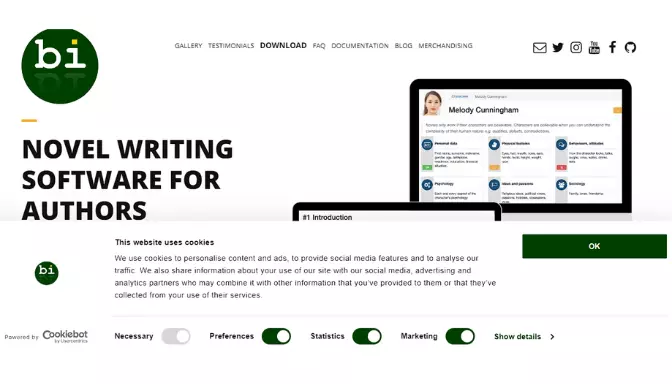To create a believable and memorable main character, you need to:
- Give them a name, age, gender, appearance, and background
- Give them a personality, motivation, goal, flaw, and arc
- Give them strengths, weaknesses, skills, hobbies, and interests
- Give them relationships, allies, enemies, and love interests
- Give them voice, dialogue style, and point of view
bibisco helps you to develop your main character by providing you with a comprehensive character questionnaire. You can answer questions about your character’s physical traits, psychological traits, social traits, personal history, conflict, evolution, and role in the story.
You can also use mind maps to determine relations between your main character and other story elements.
Step 3: Establish a central conflict and stakes
The central conflict is the main problem or obstacle that your main character has to face and overcome in order to achieve their goal. It is what creates tension and suspense in your story and what keeps the reader invested in the outcome.
The stakes are the consequences of what will happen if your main character fails or succeeds in resolving the central conflict. They are what makes the reader care about the outcome and what gives your story meaning and impact.
To create a compelling central conflict and stakes for your novel, you need to:
- Identify the antagonist or the opposing force that stands in your main character’s way
- Identify the internal and external conflicts that your main character has to deal with
- Identify the personal and universal stakes that your main character has to face
- Make sure the conflict and stakes are clear, relevant, escalating, and satisfying
bibisco helps you to establish your central conflict and stakes by providing you with a novel structure tool. You can use it to define the premise, fabula, and narrative strands of your story. You can also use it to outline the main events and turning points of your plot.
Step 4: Write a logline or synopsis
A logline is a one-sentence summary of your novel that captures the essence of your story. It usually includes the main character, the central conflict, and the stakes. For example:
- A young wizard must stop an evil lord from conquering the world with a powerful artifact
- A teenage girl volunteers to take her sister’s place in a televised death match in a dystopian society
- A man with short-term memory loss hunts for his wife’s killer using tattoos and notes as clues
A synopsis is a longer summary of your novel that covers the main plot points and character arcs. It usually includes the main character, the central conflict, the stakes, the inciting incident, the rising action, the climax, the falling action, and the resolution. It is usually written in present tense and third person.






